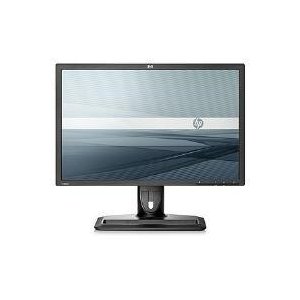A stunning new 16:10 (1920 x 1200) PLS panel monitor providing a rich and clear image from its light haze screen surface. Coupled with great viewing angles and a nicely designed fully adjustable stand it’s an excellent 24″ choice.

A high-performance IPS monitor delivering excellent colour accuracy and viewing angles with true 8-bits per subpixel colour. The 1920 x 1200 resolution is considered optimal for image processing on a monitor of this size.
A stunning new 16:10 IPS panel monitor with rich and accurate colour reproduction, strong contrast and excellent responsiveness. For more information read our review.
The Dell UltraSharp U3011 is Dell’s largest broad-gamut IPS monitor that delivers immersive, intense and colourful entertainment and creative experiences. With an ultra-high 2560 x 1600 resolution this large screen has plenty of pixels. The colour accuracy and viewing angles are also exceptional making it an excellent 30″ choice for photography, CAD/CAM and other colour-critical work.
Features brand new 2560 x 1440 (WQHD) PLS (Plane to Line Switching) technology and a light haze screen surface for excellent image definition and colour clarity. An LED backlight and fully adjustable stand design provides a pleasant, energy-efficient and hassle-free viewing experience.
A highly capable 27″ LED-backlit monitor. Supports a standard colour gamut (sRGB) with an H-IPS panel, 8-bits per subpixel (10-bit with FRC) colour support and 2560 x 1440 resolution. It is set up nicely straight from the box and offers relatively good motion performance and low input lag. This makes it suitable for both work and play.
What’s so special about these monitors?
The majority of modern PC monitors use the Twisted Nematic (TN) panel type. These are relatively cheap to manufacture, provide good all-round performance and are generally very responsive (and thus good candidates for 120Hz output technologies). They are limited by their viewing angles and colour reproduction, however, and are currently fairly restrictive when it comes to resolution. Even when viewing them from directly in front colours will shift noticeably across the screen and any given colour will appear a different shade depending on its position on the screen. These problems become even more pronounced on larger screens making them completely unsuitable for any tasks requiring a good degree of colour accuracy.
The monitors featured in this section contain panel technologies such as In Plane Switching (IPS) and Vertical Alignment (VA). These panel types (IPS in particular) are much more consistant when it comes to colour accuracy and viewing angles making them much stronger candidates for photography, CAD/CAM and other colour-critical work. With these panels you aren’t always restricted to a ‘Full HD’ resolution either. The common resolution on 24″ screens is 1920 x 1200, on 27″ models is 2560 x 1440 and on 30″ monitors is 2560 x 1600. Some modern IPS varients also contain similar pixel overdrive technologies to those used in their ‘faster’ TN counterparts and have surprisingly low input lag. Running against conventional thinking, this makes them suitable for tasks involving fast motion such as film-editing and gaming.
